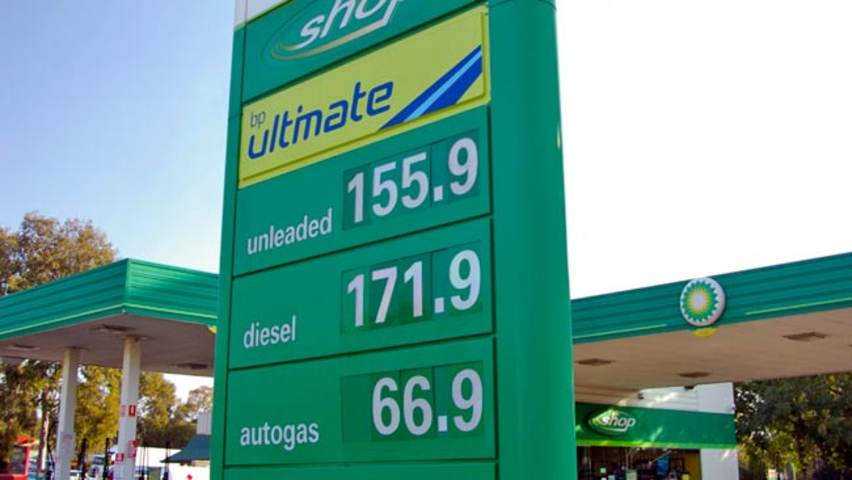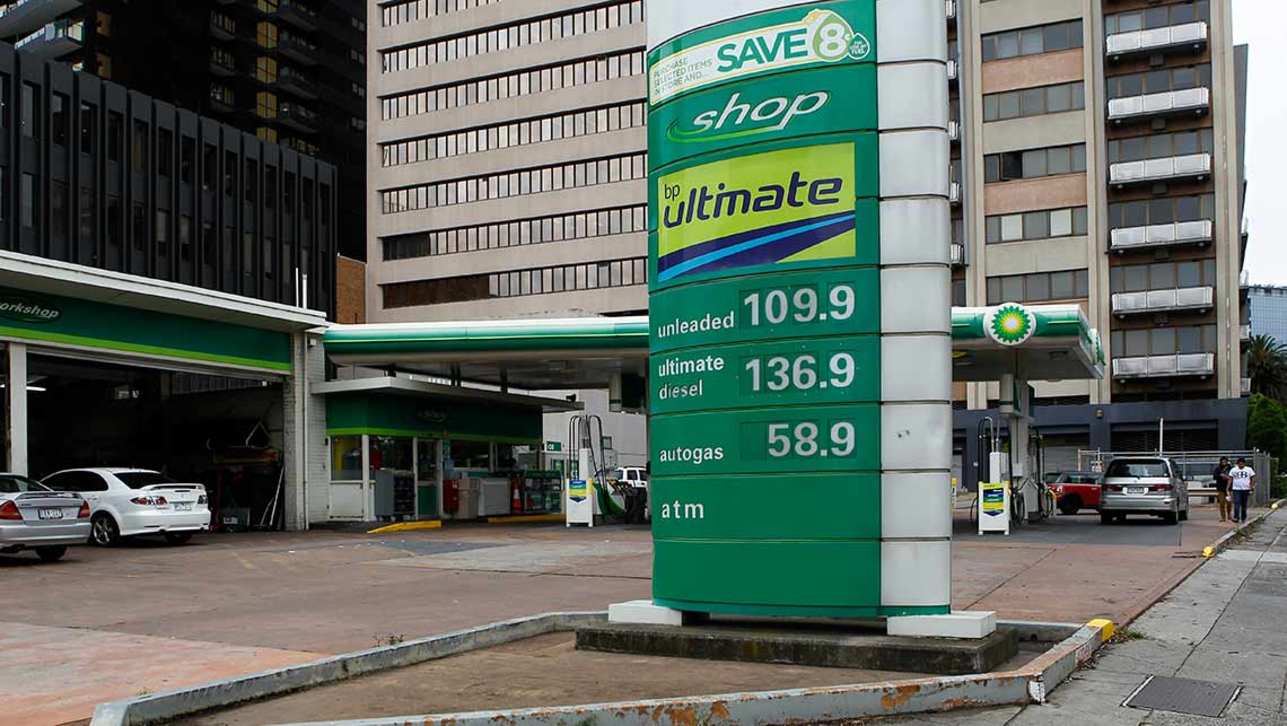Can you remember when the idea of being Australian was synonymous with a single petrol brand? Or when a “servo” was an actual “service” station, where people in overalls would rush out to fill your car for you, and wash your windscreen, while you sat there, devoid of the temptation to shop for chocolates and fizzy drinks?
Well, you must be old. But there is a strangely strong connection between motorists and oil-company brands - most notably the “Australian as” Ampol, which disappeared 25 years ago when it was eaten by Caltex. Interestingly, Ampol is making a comeback in 2020, with Caltex announcing it has begun the process of transitioning back to the original “much-loved and iconic” brand over the next three years.
You might also get a warm glow of familiarity looking at the green and gold BP logo, because it’s been one of our biggest for decades, but it actually stands for British Petroleum, of course.
And then there are all those people who still go ga-ga over Golden Fleece signs, for some reason, and have made them into collectables.
The modern fuel market is very different, of course, as service stations have become more like shops with convenient bowsers outside. That shift to supplementary shopping has been both mirrored and encouraged by the biggest Australian petrol brands of the day - Coles and Woolworths.
So which are the biggest and best brands in Australia today, and do we actually shop between them, or just stick with the one we love?
As you might expect, price is the biggest factor, for most people. The ACCC’s recent report on petrol prices showed that prices vary considerably by retailer, and that price-sensitive consumers can make significant savings over time by choosing to buy cheaper.
For other consumers, however, “the price of petrol is not as important a factor in their decision about where to buy fuel,” the ACCC reports.
“These consumers may prefer to purchase petrol from retailers that they consider to be in convenient locations, have superior convenience-store offerings or offer loyalty schemes (such as frequent flyer points).
“These consumers can still benefit from having a wider range of retailing operations to choose from, as retailers are likely to try to compete on non-fuel offerings to attract these consumers.”
According to Canstar Blue, 29 per cent of Australians fill up at the same service station, regardless of price, while 27 per cent would be prepared to drive further for cheaper fuel.
Here is our list of the top petrol brands in Australia, and how consumers rate them.
It turns out there is plenty of debate about which ones are bigger than others, and the order may well change, month by month, but these are ACCC figures.
1) Coles Express
.jpg)
According to the ACCC, Coles Express has the largest share of total volume of petrol sales, with 16 per cent. Although you might think of these as Shell service stations, as they are co-branded as Shell Coles Express.
This brand is one of the most common across the continent, with more than 700 locations, and differs from simple, Shell-branded servos, which don’t have supermarkets attached.
The brand’s most obvious advantage are the shopper dockets from Coles, which can get you as much as 4c a litre off at the pump.
Shoppers can also scan their Flybuys rewards cars to accumulate points while buying fuel, which could, in theory, be swapped for flights one day.
2) Woolworths Caltex
.jpg)
Right behind at 15 per cent of the market, the Woolworths Caltex outlets are, again, different from straight Caltex service stations, and there are more than 500 of these around Australia.
Shoppers here can use the Everyday Rewards program and get one point for every dollar spent.
Motorists can also access Caltex’s Vortex range of fuels here.
3) BP

The big green and gold British Petroleum brand has a long history in Australia and if you combine the company’s different sites around Australia it takes 16 per cent of the market (but the ACCC breaks them into two kinds, making up 10 and 6 per cent).
It is well known for its huge forecourts, outback truck stops and extensive fuel-card program. It’s also spent a lot of cash over the years talking up its BP Ultimate 98 octane premium fuel.
BP has a staggering 1400 locations across Australia.
4) Caltex
.jpg)
Caltex Australia, which, as mentioned, is soon to be known as Ampol again, is sometimes called the largest fuel retailer in the country, and credited with a whopping 25 per cent market share, but doing so conflates its Woolworths locations with its own and creates some confusion.
Pure Caltex servos take up 14 per cent of the market (again, broken into two parts of 10 and 4 per cent by the ACCC).
Let’s just say Caltex is very large indeed in this country, and best known for its Vortex fuels, which are advertised as having engine-cleaning additives. It also offers the StarCard, which can provide savings on fuel and other goods.
5) 7-Eleven
.jpg)
Another place for buying groceries that is now a significant player in the fuel market, 7-Eleven makes up an impressive 9 per cent of the Australian “gas” market, as an American customer of its huge global chain of convenience stores would put it.
7-Eleven’s fuel partner is Mobil, another well-known brand in this country.
Interestingly, 7-Eleven offers not only Slurpees but a ‘lock-in’ app. You download the app and find out the best fuel price in your area, then you can lock that price in for seven days and use it at any 7-Eleven. Impressive.
In Canstar Blue’s customer ratings, 7-Eleven servos scored the maximum five stars when it came to non-car items for sale in its stores, and four stars for all other categories, including customer satisfaction.
6) United
.jpg)
Born in South Australia in 1992, United has since expanded to other locations in Victoria, NSW, Queensland and the ACT and now makes up a substantial 6 per cent of the fuel market.
United has more than 400 sites in Australia and offers “effective fuels at a competitive price”, which means it’s often a cent or two per litre cheaper than other, bigger retailers.
7) Puma
.jpg)
The tiny Puma brand, a relatively new player in Australia, just makes the list with 3 per cent of the fuel market.
Not to be mistaken with a brand of shoes, Puma has 360 fuel stations across the country and partners with the RAC in WA and Queensland, offering members a 4c per litre discount on fuel.
It also owns other small brands including Neumann, Ausfuel Gull and Matilda.
In Canstar Blue’s ratings it was the top-ranked petrol station, scoring five stars for overall satisfaction, appearance and cleanliness, service, convince and facilities.
8, 9 and 10 - The Rest

While Shell scrapes just 1 per cent of the market with its uniquely branded, non Coles Express sites, that’s barely a blip next to the combined might of what the ACCC calls “Small Independents”, of which there are many, all adding up to 17 per cent of the market between them.
These brands include Metro Petroleum, Liberty and Costco.



.jpg)


.jpg)
 copy.jpg)

.jpg)
.jpg)




.jpg)

.jpg)
.jpg)

Comments